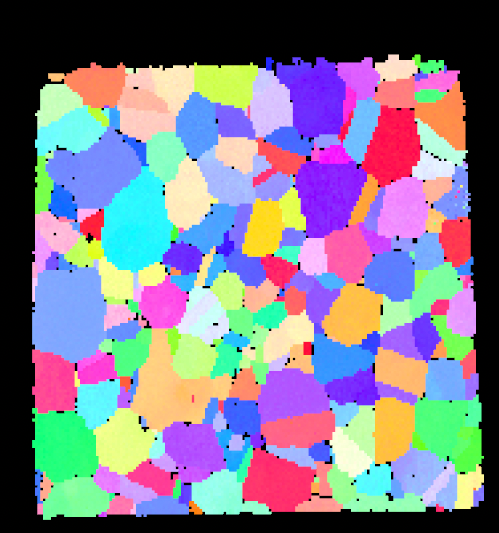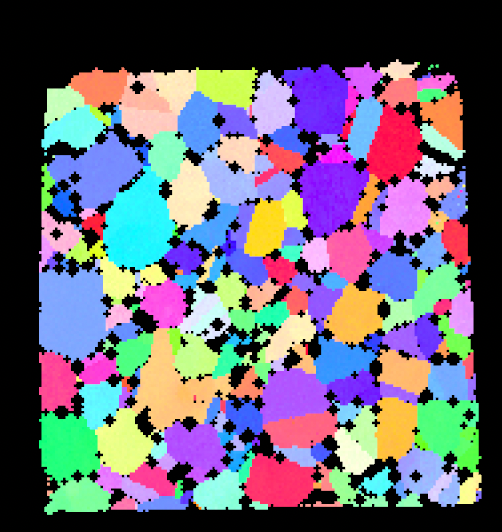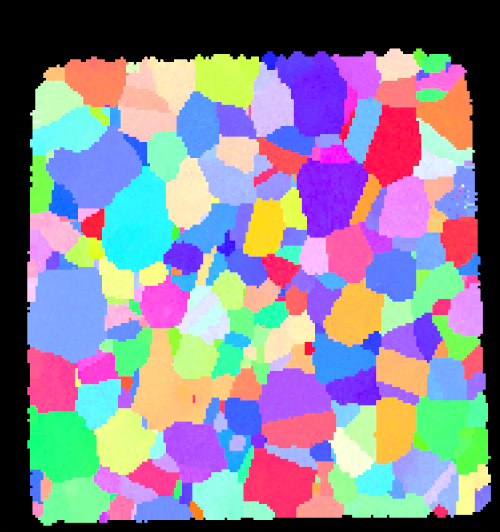8.70. Erode/Dilate Bad Data
Group (Subgroup)
Processing (Cleanup)
Description
Bad data refers to a Cell that has a Feature Id of 0, which means the Cell has failed some sort of test and been marked as a bad Cell.
Dilation
If the bad data is dilated, the Filter grows the bad data by one Cell in an iterative sequence for a user defined number of iterations. During the dilate process the Feature Id of any Cell neighboring a bad Cell will be changed to 0.
Before Dilation |
After Dilation |
|---|---|
|
|
Erosion
If the bad data is eroded, the Filter shrinks the bad data by one Cell in an iterative sequence for a user defined number of iterations. During the erode process the Feature Id of the bad Cell is changed from 0 to the Feature Id of the majority of its neighbors. If there is a tie between two Feature Ids, then one of the Feature Ids, chosen randomly, will be assigned to the bad Cell.
Before Erosion |
After Erosion |
|---|---|
|
|
`
Goals a user might be trying to accomplish with this Filter include:
Remove small or thin regions of bad data by running a single (or two) iteration erode operation.
Increase the size of a bad data region by running an dilate operation. This might be useful if the experimental technique tends to underestimates the size of certain objects. For example, when running EBSD, the pores (which show up as bad data) are generally smaller in the scans than in the specimen, because the beam, when it is just inside the pore, still can pick up signal from the material just beneath the pore.
Running the erode-dilate operations in pairs can often change the size of some objects without affecting others. For example, if there were a number of big pores and a number of single bad Cells, running a single erode operation would remove the single Cells and reduce the pores by one Cell. If this is followed immediately by a dilate operation, then the pores would grow by one Cell and return to near their original size, while the single Cells would remain removed and not “grow back”.
WARNING: Feature Data Will Become Invalid
By modifying the cell level data, any feature data that was previously computed will most likely be invalid at this point. Filters that compute feature level data should be rerun to ensure accurate final results from your pipeline.
Input Parameter(s)
Parameter Name |
Parameter Type |
Parameter Notes |
Description |
|---|---|---|---|
Operation |
Choices |
Whether to dilate or erode |
|
Number of Iterations |
Scalar Value |
Int32 |
The number of iterations to use for erosion/dilation |
X Direction |
Bool |
Whether to erode/dilate in the X direction |
|
Y Direction |
Bool |
Whether to erode/dilate in the Y direction |
|
Z Direction |
Bool |
Whether to erode/dilate in the Z direction |
Input Cell Data
Parameter Name |
Parameter Type |
Parameter Notes |
Description |
|---|---|---|---|
Selected Image Geometry |
Geometry Selection |
Image |
The target geometry |
Cell Feature Ids |
Array Selection |
Allowed Types: int32 Comp. Shape: 1 |
Specifies to which Feature each Cell belongs |
Attribute Arrays to Ignore |
MultiArraySelection |
The list of arrays to ignore when performing the algorithm |
Example Pipelines
(08) SmallIN100 Full Reconstruction
(07) SmallIN100 Final Processing
04_Steiner Compact
License & Copyright
Please see the description file distributed with this Plugin
DREAM3D-NX Help
If you need help, need to file a bug report or want to request a new feature, please head over to the DREAM3DNX-Issues GitHub site where the community of DREAM3D-NX users can help answer your questions.


